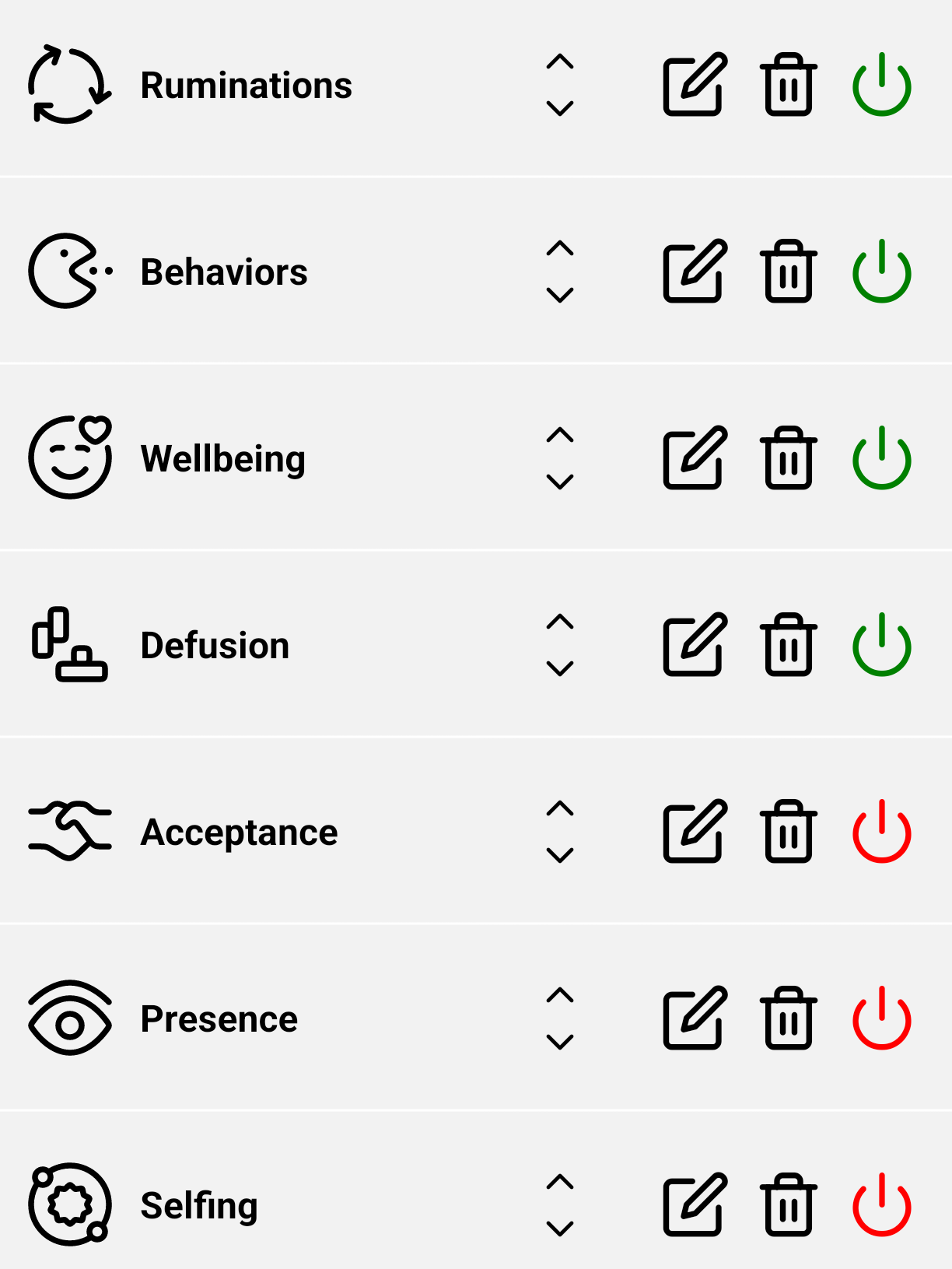While the app itself has a simple interface and a limited set of functionality, the history of its development and usage started many years ago, even before starting to develop it. In order to enforce a way of personal curiosity and experimentation, the app is empty when it is installed.
But here is the story of how I built and used it to serve as an example.
Before the app
In 2017 or 2018, after 10 years of working not only remotely but without a set schedule, I would only work when I felt like it. When I did so, I would enter a state of flow for hours on end. Many times, in just two days, I would accomplish what was expected of me for an entire week. It’s very interesting, feels great, is fun, and truly exciting. The downside is that it works well when things are going well, but there are no breaks when things go poorly. That was the year I was living in an atelier.
First, there’s the emotional component that there’s no “off switch,” but also the immediate freedom I was following brought with it a huge mental load, because I had to decide at every moment what I was going to do next. I never organized meals; I would just eat whatever I felt like at the time, and that constant questioning comes at an emotional and cognitive cost. At that point, I thought, “I need to impose some limits. I have to live an organized life.” But that first attempt of organized life was very rigid: I would get up at 7 a.m., start boiling water for a tea at 7:02, remove the tea bag after washing my face at 7:05, and so on. One decision I did make then that I still carry is to limit my breakfast to two options:
One was a French omelet and the other was cruesli.
However, these routines were based on rigidity and weren’t established with compassion. They worked for a while, but it was easy to abandon them because they were overly strict. After four previous attempts at different therapies, I decided to look for one that suited my needs. I investigated which modern therapies had the most supporting evidence and searched for professionals in Barcelona who aligned with my principles and what I had found about psychology. I was fortunate to find a wonderful professional, Pablo Oromendia, who had done his thesis on the use of online tools to support therapy, and I thought, “This is it.”
The next stage arose from two ideas or principles: the day begins the night before, and you have to be compassionate with yourself. That’s where the photo of my routine poster comes from. When we think of morning and evening routines, we normally put the morning one first and then the evening one to close the cycle. But I had the intuition that if I introduced the evening routine first, I would create a cycle that links one day with the next. This routine setting worked much better because it was coming from love and kindness, and also because I was doing it alongside Pablo, paying attention to thought, feeling, and action.
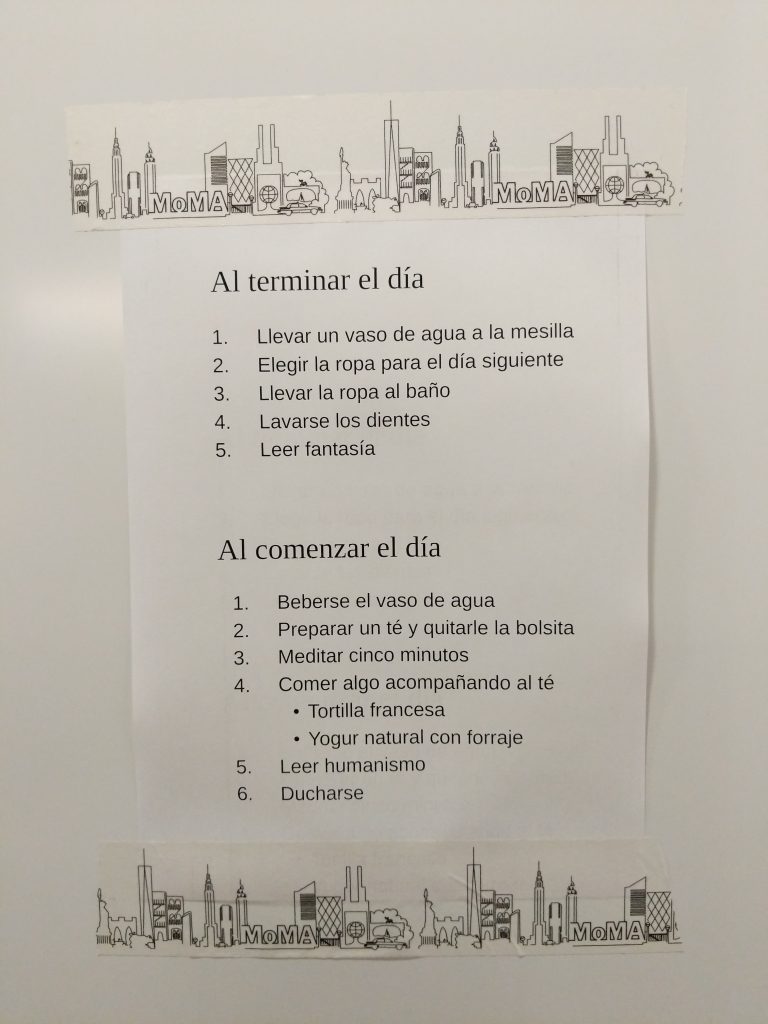
Later, I incorporated another principle: listening to music helps setting the tone to carry out an action, so I did exactly that. For example, at breakfast, I had a flamenco playlist; a chill one for meditating (five minutes was enough); and another, more energetic, for the shower. That worked well, and I put it into practice. Around that time, I was also studying behavioral analysis and data science, so I thought, “Now that I have these music-based routines, I’ll make a very simple app that automatically opens the playlist for each activity and also logs the time I start them.”
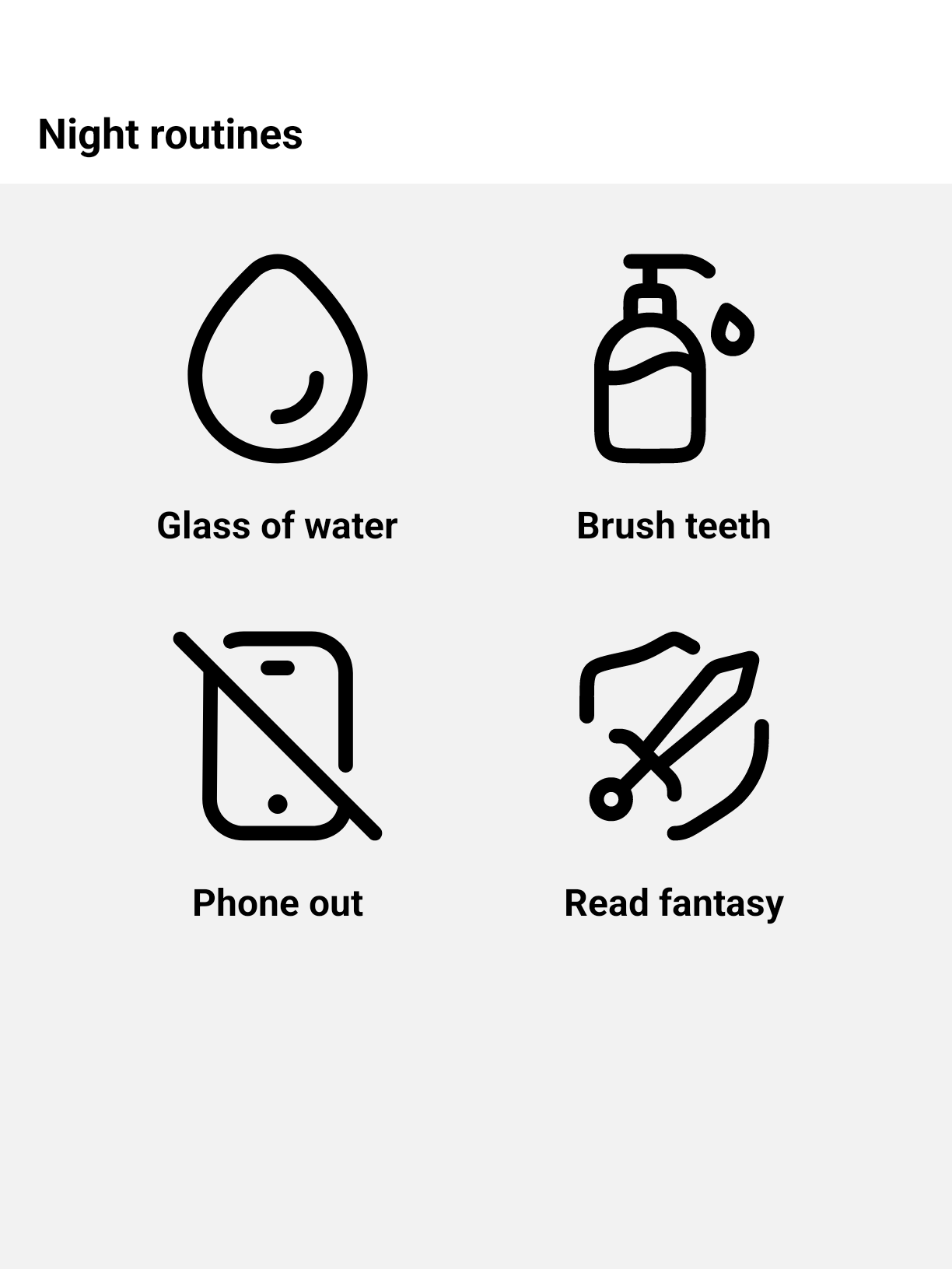
The first version
From the beginning, I called it uMetric, because the idea was to measure, measure, measure. My plan was to use it for a while and then apply artificial intelligence to detect emotional patterns. At first, I thought that if I also recorded how I felt, a machine learning model could pick up on certain conclusions—like noticing patterns based on the time I woke up, the order in which the morning tasks of the routines are carried out, or the time elapsed from the beginning of the routines until the end. It would be a study, an exploration, a game.
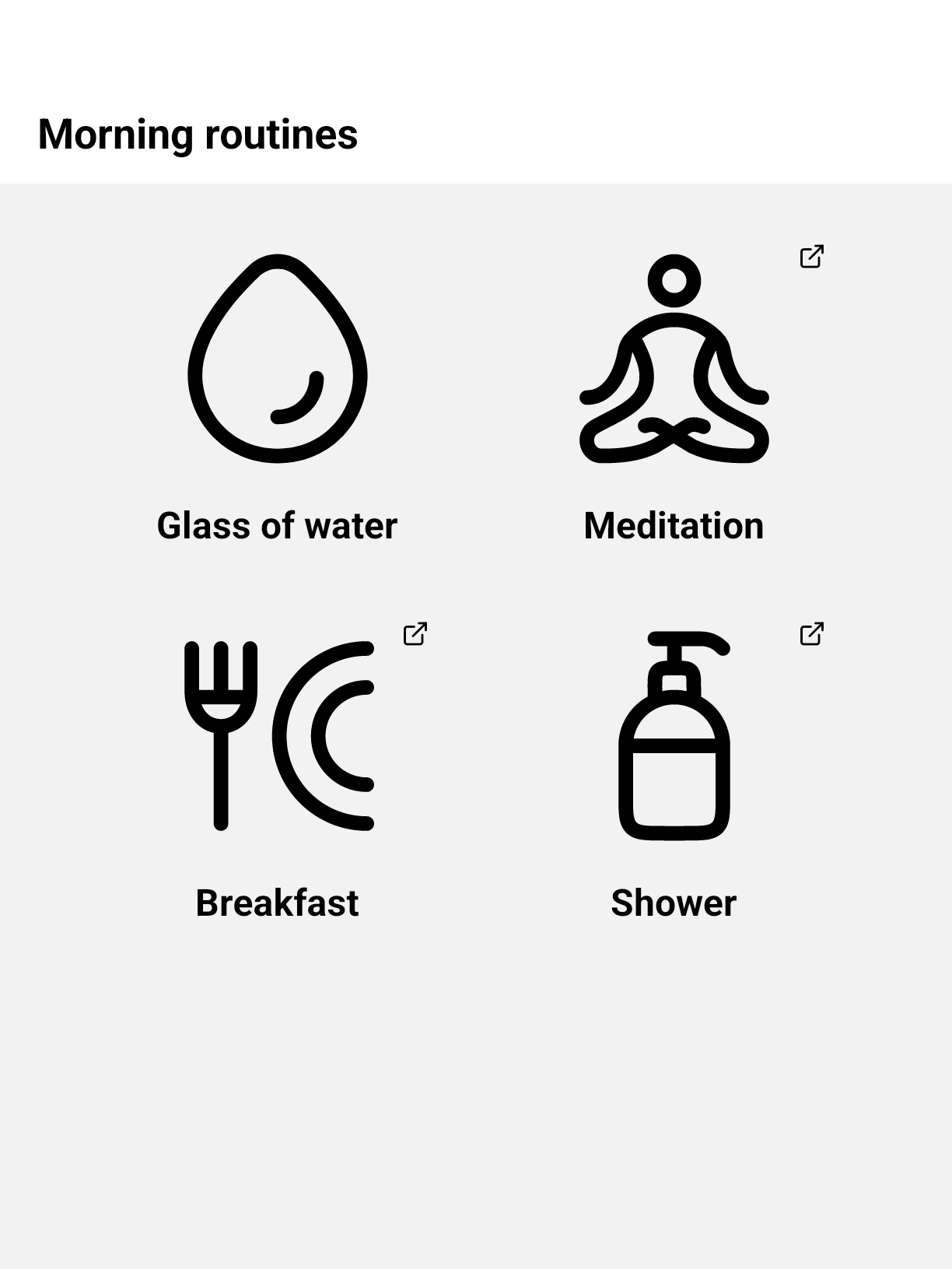
What I did at work was study attention, and in a way, that study is reflected in the app. Although it’s very simple, it can have many facets. I believe I spent one year and a half with only night and morning routines as categories, so during that time, the app only served to launch playlists and save the event log. I knew it was logging everything, and that was enough, even when I was not examining the patterns. Another design principle I followed when creating the app was to devote the least possible time to programming. I called it frustration-oriented programming: I wanted to spend the minimum amount of time programming the app, and I would only add or fix something if I found it frustrating to use enough to force myself to do it. I was going to be the sole user, with no real intention of widespread adoption—although I didn’t rule out someone else using it. I just didn’t want to be at the app’s mercy, so I kept it minimal, fixing or adding only when absolutely necessary.

Another principle was that it shouldn’t steal your attention but rather require attention to be used. It shouldn’t create dependency but promote autonomy or agency. Also, interactions had to be as short as possible, my initial goal in this regard was that any direct interaction with the app would take no more than two seconds.
I used it that way, and looking back, I see that I later added more features, which I’ll explain, but that was always the foundation. Sometimes I used it for more things, sometimes for almost none, but the routine remained. Tapping the button was like a commitment: “I’m going to follow my morning routine, do this project, or that other one.” In the moment of starting, tapping the icon felt like a pact with myself: “I’m going to do this right now.” So for around two or three years, from when I got up until about two hours later, it was almost a meditative exercise. Right after waking up, I’d drink a glass of water, then meditate, and successively tap the icon for the next activity, which usually launched the corresponding music playlist. That allowed me to notice my thoughts—often telling me, “You could just go back to sleep,” or, “You don’t really need to do this step today”—without forcing myself or denying those thoughts. By simply having pressed the button, I was already committed to performing the task it represented. I could observe those thoughts while doing the activity.

Around that time, I added a section to record how I felt, but I realized I only noted the high points (feeling really great or really terrible) and ignored the intermediate or mixed states. To fix that, I set alarms on my phone at noon and 9:00 p.m. It was interesting to find that often the most subtle emotions, or the ones that are not as easily identified, are a mix of several basic emotions, allowing you to feel scared and happy at the same time, for example.
Introducing the Hexaflex
Then Pablo introduced me to Acceptance and Commitment Therapy (ACT). He gave me a book (I believe it was December, before our final session of the year) called A Liberated Mind. From that moment on, I took the reins of my psychology learning syllabus and how to choose the general elements of a therapy that would work for me. After learning about ACT, I added the six core processes of psychological flexibility to the app.
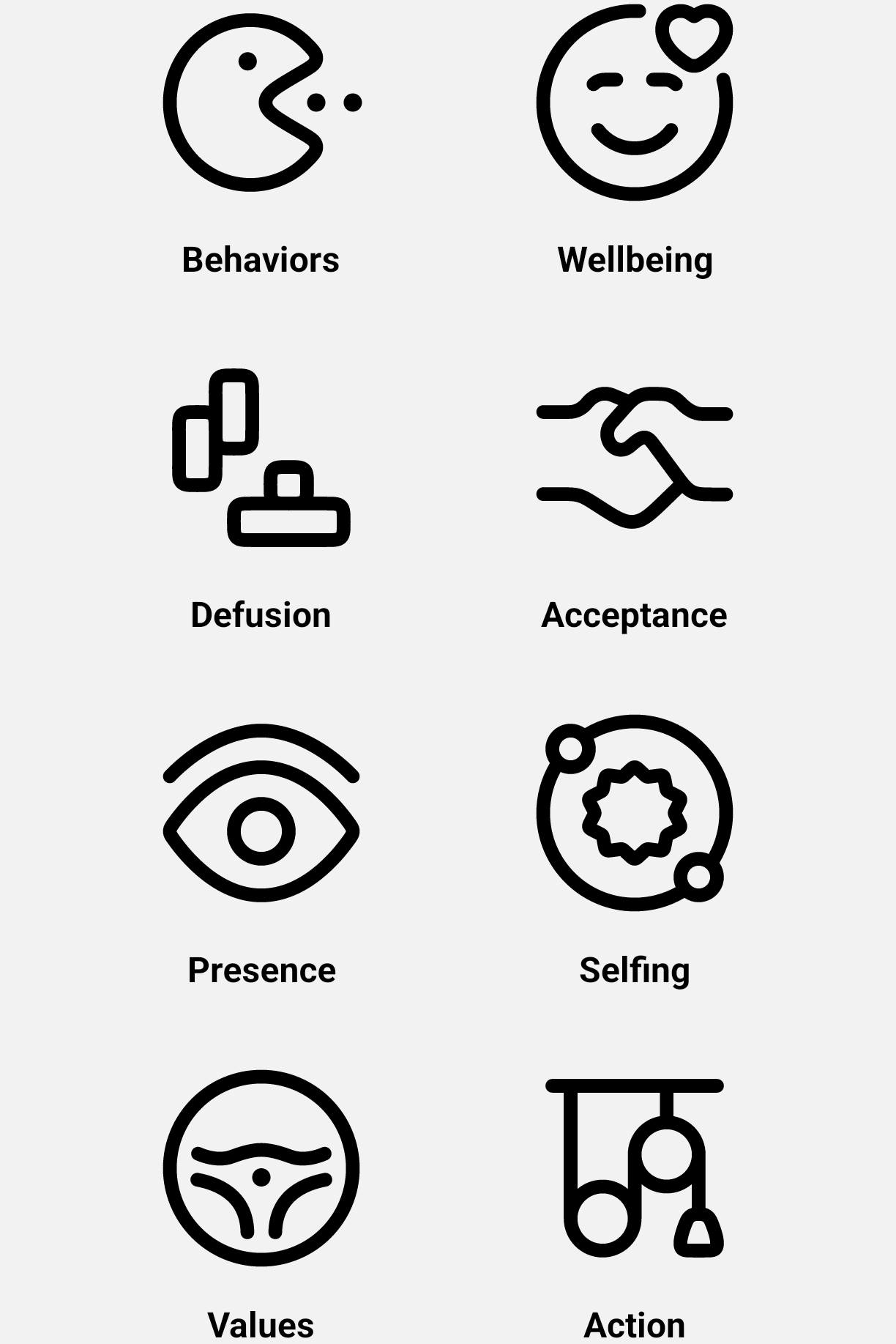
Having already added the section on emotions, I included two more sections: one for ruminations (like “you’ll end up alone forever, nobody loves you,” etc.) and another for behaviors I know aren’t good for me, like smoking or “doom scrolling.” Then I incorporated audio recordings of exercises I had tried that worked for me. In some of the ruminations or behaviors, there would be a link to the corresponding category so that, when you logged a negative behavior or rumination, it would take you to a related exercise category to address it.
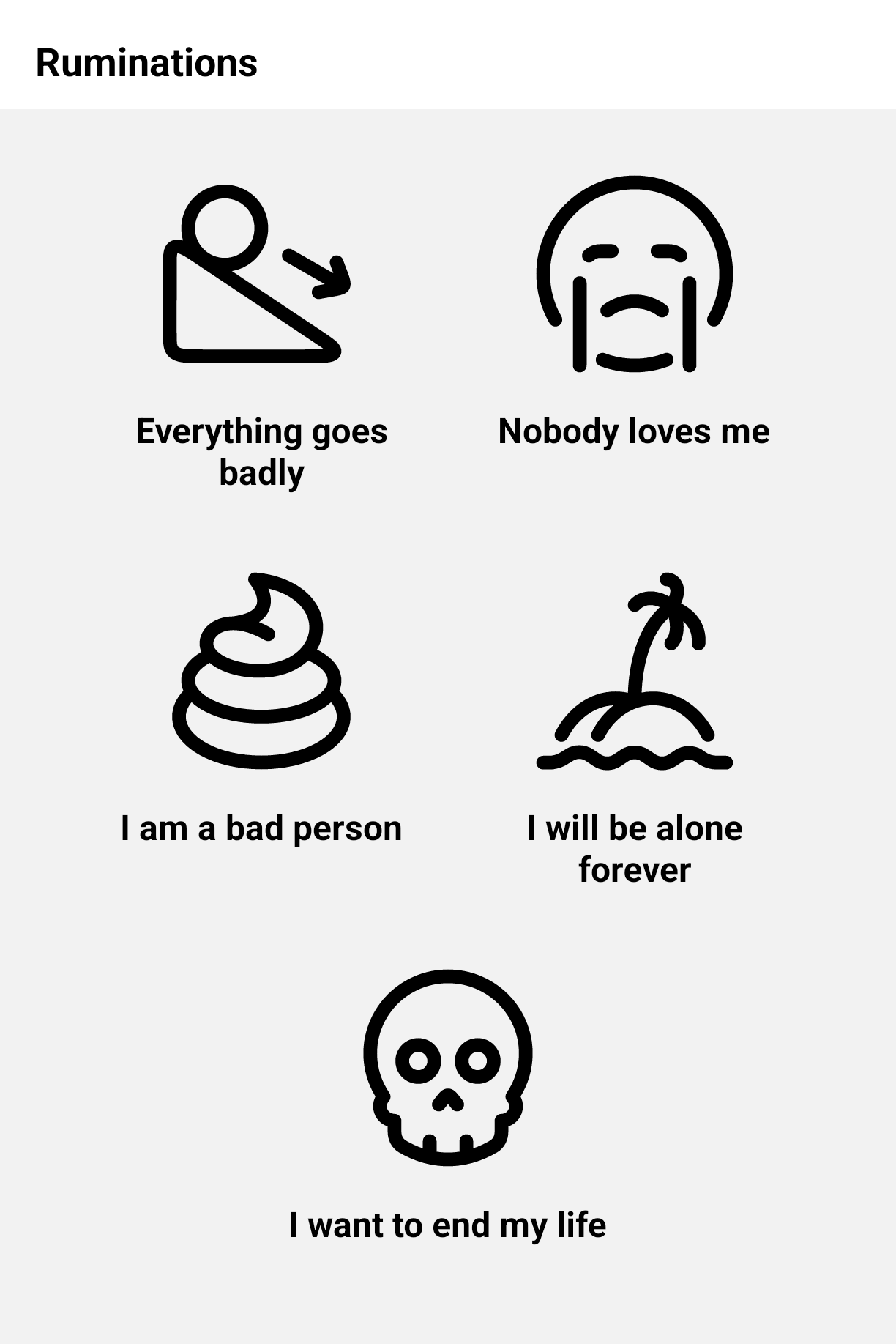
Weekly Goals
I started setting weekly goals and thought, “I can add this to the app,” because I was doing it on paper. So on the one hand, I was using the app to log all this, and on the other, I had weekly goals on paper.
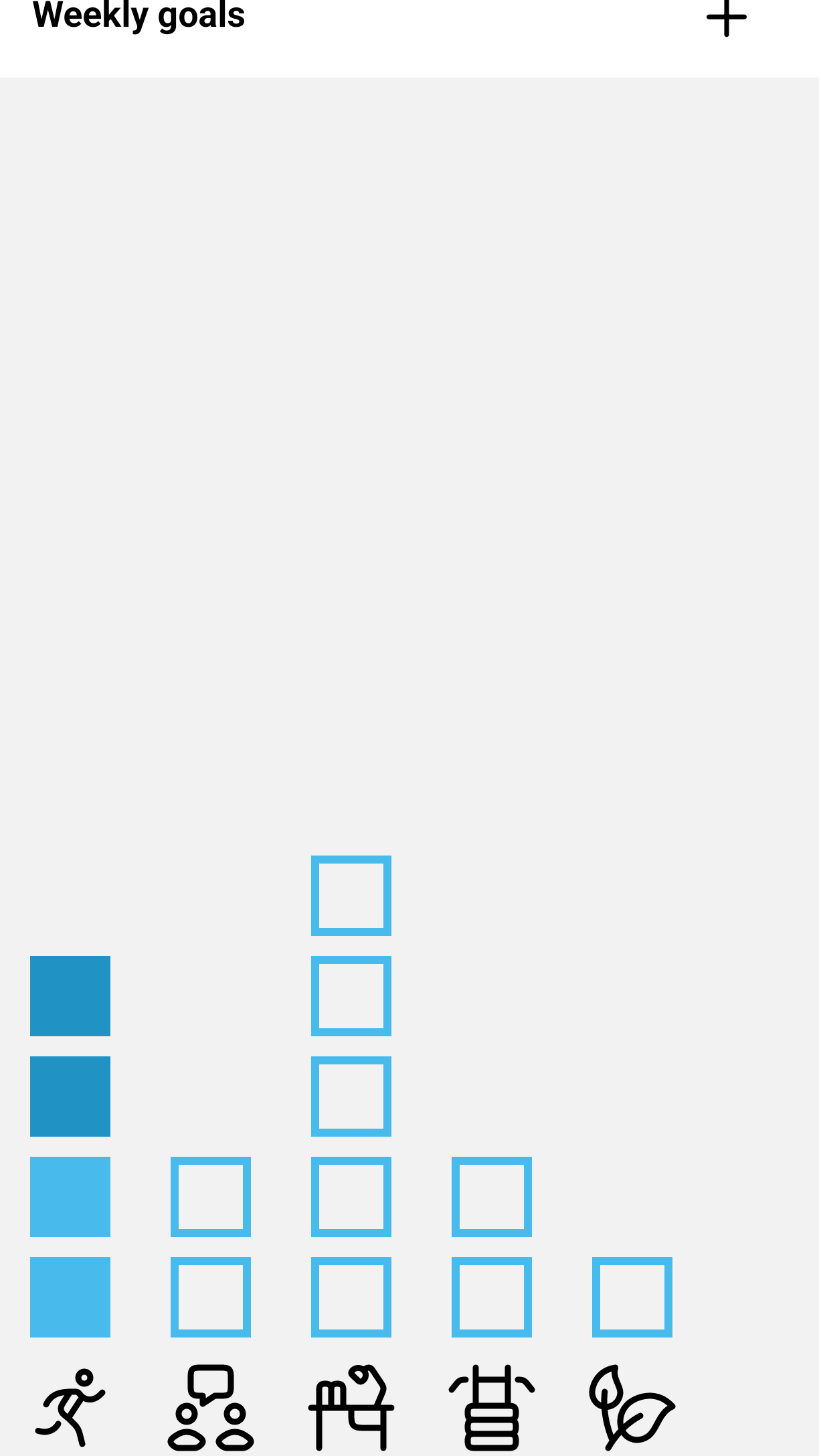
Psychological Questionnaires
Later, I found another very useful tool. I recall that when I began therapy with Pablo, he sent me a questionnaire to assess my mental state, I believe specifically for depression. I then researched psychological questionnaires with strong psychometrics and registered at the contextual behavioral science portal, where I found some very interesting ones.
I realized that filling out these questionnaires was incredibly helpful, without worrying too much about the final score. Similar to pressing the button in the app, the key was answering them sincerely while observing. Some of these questionnaires, through how they frame questions and use scales, provide extremely valuable information just by reading the questions with openness.
I conducted a study not just to find these questionnaires but to understand their structure, learning about Likert scales. I observed that one particularly interesting questionnaire —the Automatic Thoughts Questionnaire-Revised— featured two Likert scales. That’s rare, because generally you see a single scale per questionnaire and one response per question. In this case, they presented several statements and asked: “During the past week, how often did you have that thought, and what level of belief did you have in it?” Answering these two aspects seemed very valuable because it slows automatic thinking, especially if you’re doing it for yourself. Sometimes I calculated the results, but that was never the main point. Another one I loved was the Self-Compassion Questionnaire, which, just through its wording, guides you toward the necessary introspection.
I created a general questionnaire model capable of handling any number of scales, you can learn more about this model in the Data Structures page. There was even one with positive and negative questions on the same scale, and all of that went into the model. It’s quite interesting for psychological questionnaires or any type of social data collection.
First with server, then local
From the start, I designed the app using a server, because for most of my life, I’ve programmed server-based solutions; the Android part was just the interface. But I understand that if I wanted the app to be used by other people, they would be concerned to send their very private information to my server.
During this year I got to work and found a way to make the app function without contacting any server, adding the possibility of sharing information in an encrypted manner with whomever you choose. If you know someone and want to share your questionnaire results, the app needs to have identified that person beforehand, exchanging cryptographic data. Then, when you decide to share the results of a questionnaire or entries from certain categories, they will be encrypted so only the intended recipient can read them.
Fitbit data in and out
At one point, I included data from my Fitbit to make some charts, but I didn’t get very far. Then Google bought Fitbit and I decided I didn’t want to use Google, so I removed that feature. But last year, I realized more people could benefit from this app, and I believe it might be part of a broader movement emerging now to collect data in social experiments in a conscious and safe manner. I will eventually cycle back this using an open source tool to communicate with the health trackers, like Gadgetbridge.
Life seasonality
And because life is a dance, at moments we are here, at moments we are there, because during summer we might do things in a different way than we do them in winter, the last feature I added is a way to disable categories or events, so they will not be shown in the screens for registering, nor in the goals creation.
